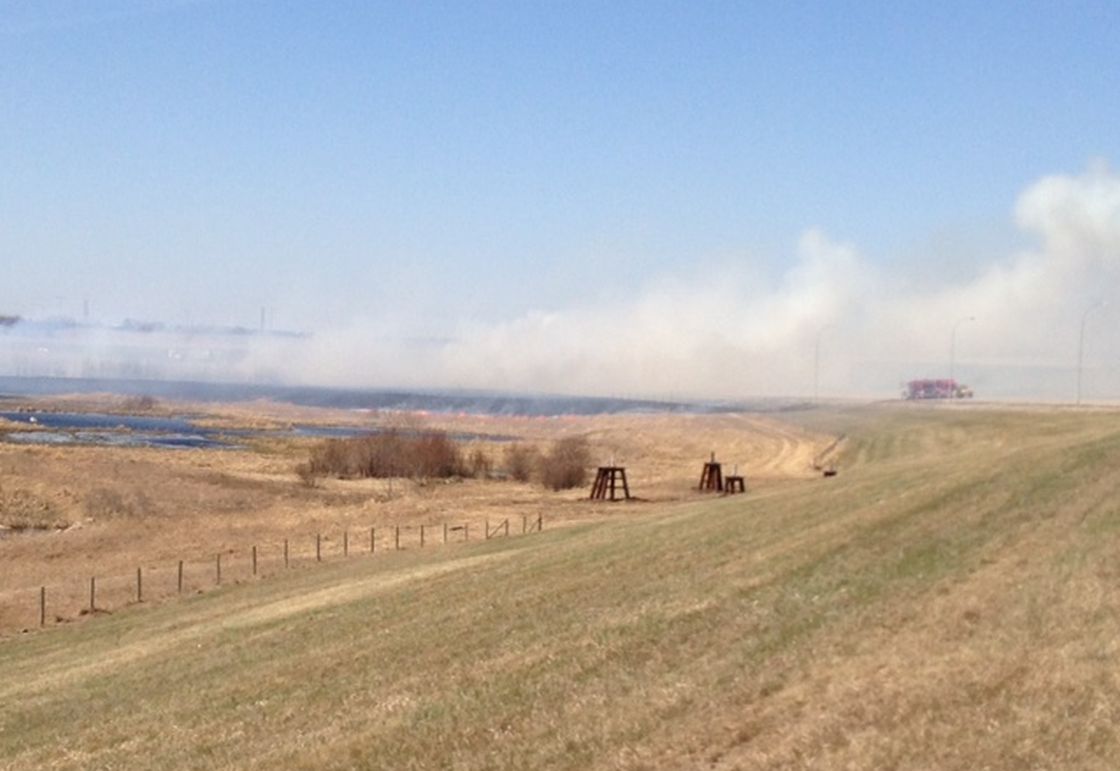EDMONTON – With record temperatures in the forecast and tinder-dry brush and grass in many areas, Alberta’s wildfire crews are on high alert.

Despite a long, cold snowy winter, the fire threat is already listed as very high to extreme in central and northwestern parts of the province.
On Monday, a large grass fire briefly shut down a portion of Highway 63 south of Boyle.
Geoffrey Driscoll, a wildfire information officer, said the fire was in the county of Thorhild, and a helicopter had been sent out to assess the situation.
Driscoll said conditions in some areas are similar to May 2011 before flames roared through the town of Slave Lake, destroying hundreds of homes and forcing thousands of people to flee to safety. It caused an estimated $1 billion in damage, including firefighting and relief costs.
“It is a dangerous time,” Driscoll said Monday. “It is the same time of year just before the wildfires in Slave Lake two years ago. We are in that same window. We are being really cautious.”
One brush fire that broke out Saturday south of Grande Prairie came within one kilometre of a Weyerhaeuser pulp and saw mill before it was contained by ground crews and water bombers.
The mill was not evacuated, but Weyerhaeuser staff moved train cars carrying chemicals out of the path of the fire as a precaution, said Wayne Roznowsky, a company spokesman.
The mill employs about 600 people.
“We had to take the appropriate precautionary steps,” Roznowsky said. “It is dry and we have no rain in the forecast. It was 28 (degrees) Sunday and it will be 28 today.”
The forecast high temperature Monday for the Edmonton and surrounding area was 30 C.
Driscoll said more than 300 firefighters are on duty in the province, with another 1,500 that can be called in quickly when needed.
The problem is much of the snow that fell over the winter has evaporated instead of melting and soaking the ground.
The grass and brush have not greened up and it is still too early for the trees to bud, making them more prone to fires.
Warm temperatures combined with dry air and gusty winds create conditions where fires can spread quickly, making them hard to contain.
“Anywhere where the snow has retreated it is high to extreme,” Driscoll said. “It is extremely dry in those areas and will be for the next little while.”
There are two main areas of concern. One runs from west of Edmonton east to the Saskatchewan boundary just north of the North Saskatchewan River. The other is northwest Alberta in the region between Peace River and Grande Prairie.
Driscoll said early season wildfires are almost always caused by people near communities and can easily be prevented.
The province was discouraging the use of quads and other off-highway vehicles in some parts of the province. Operators of such vehicles were being urged to check for hot debris from the machines that could start wildfires.
Fire permits were suspended in some areas.
Fighting wildfires outside of Alberta’s forest zone is primarily the responsibility of municipalities, but communities often call in provincial fire crews for out of control fires.
On Monday there were 25 wildfires burning in the provinces. Five of the fires were being held and none were out of control.
— with files from CHED


Comments